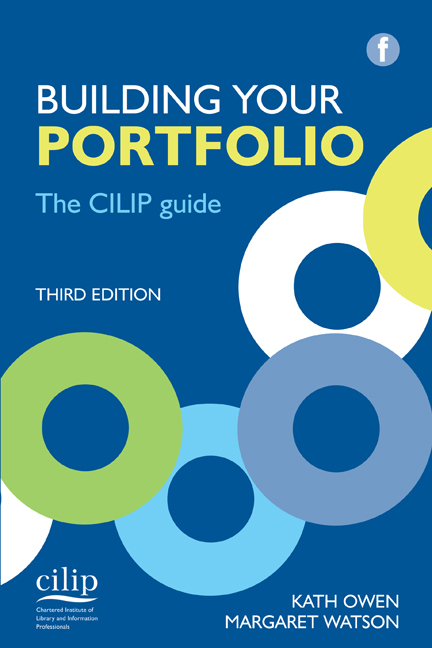Book contents
- Frontmatter
- Contents
- Contributors
- Foreword
- Acknowledgements
- 1 Introduction and getting started
- 2 Assessment criteria
- 3 Working with a mentor
- 4 Reflective writing
- 5 The curriculum vitae
- 6 The Professional Knowledge and Skills Base
- 7 Evaluative statements
- 8 Supporting evidence
- 9 The final steps
- Bibliography and references
- Websites
- Index
7 - Evaluative statements
Published online by Cambridge University Press: 08 June 2018
- Frontmatter
- Contents
- Contributors
- Foreword
- Acknowledgements
- 1 Introduction and getting started
- 2 Assessment criteria
- 3 Working with a mentor
- 4 Reflective writing
- 5 The curriculum vitae
- 6 The Professional Knowledge and Skills Base
- 7 Evaluative statements
- 8 Supporting evidence
- 9 The final steps
- Bibliography and references
- Websites
- Index
Summary
What is an evaluative statement?
In many ways the evaluative statement is the most important element in your Portfolio. Think of it as being rather like an executive summary in a report. If the report is long you should be able to get a very good idea of its contents from the summary. The executive summary almost stands as a document by itself. People should be able to read your evaluative statement and understand immediately what you are presenting about yourself and your development.
It may help you to think of the evaluative statement as a summary of the submission as a whole. If the evidence is a map of your development and achievements, then the evaluative statement is the key to understanding it.
The evaluative statement needs to show how you have met each of the assessment criteria and should link to the evidence that you have selected to demonstrate this. It is therefore helpful to have selected your supporting evidence first so that you can write an informative and reflective statement. It can be helpful to use the assessment criteria as headings in your statement (they are not included in the word count). This ensures that you cover all the assessment criteria and makes it easier to avoid becoming descriptive.
The evaluative statement is the one piece of reflective writing that must be in your Portfolio, although there should be other examples in the supporting evidence too. Your evaluative statement should show evidence of analysis, evaluation and review of your knowledge and experience.
Making a start
You will probably need at least two or three drafts before you are satisfied with your evaluative statement. The first draft I prepared for my Fellowship application was no good at all; it was really just a narrative version of my CV. However, writing it like that got it out of my system and helped me to concentrate on what I really wanted to say. Ultimately, I found it very useful to build my statement around the assessment criteria.
You will find it useful to discuss the early drafts of your evaluative statement with your mentor or a colleague, as they may have a more objective view.
- Type
- Chapter
- Information
- Building Your PortfolioThe CILIP guide, pp. 65 - 78Publisher: FacetPrint publication year: 2015



